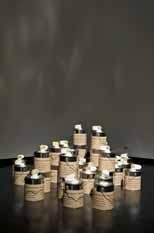Encounters in Relational Geography
dal 31/5/2010 al 1/7/2010
Segnalato da
Ranko Bon
Dumitru Budrala
Marina Grzinic
Aina Smid
Isa Rosenberger
Saso Sedlacek
Vlad Nanca
Zbynek Baladran
Richard Appignanesi
31/5/2010
Encounters in Relational Geography
Open Space - Zentrum fur Kunstprojekte, Wien
Seven East European artists have been convened as diagnosticians and researchers to explore these questions in the art exhibition. Each artist, of acknowledged status, will address new multi-media work to the urgencies of a 'space for life' in the neoliberal capitalist reconstruction and deterritorialization of East Europe. Vienna, the former imperial lynchpin of trans-territorial peoples, is the ideal 'in-between' site for this exhibition.

curated by Richard Appignanesi
Ranko Bon
Dumitru Budrala
Marina Grzinič und Aina Šmid
Isa Rosenberger
Sašo Sedlaček
Vlad Nancă
Zbyněk Baladrán
The awkward question: is East Europe really accounted as European ‘added value’? Or is our
currently ‘extended Europe’ fatally schizothymic. Do the East European newcomers to the Union
remain disavowed migrants at the banquet edge of Western Europe? Where does the threshold of
Fortress Europe actually begin, once again?
Seven East European artists have been convened as diagnosticians and researchers to explore these
questions in the art exhibition, ‘Encounters in Relational Geography - Dust, Ashes, Residua’. Each
artist, of acknowledged status, will address new multi-media work to the urgencies of a ‘space for life’
in the neoliberal capitalist reconstruction and reterritorialization of East Europe. Vienna, the former
imperial lynchpin of trans-territorial peoples, is the ideal ‘in-between’ site for this exhibition.
The broom is our humble emblem, the symbol of everyday domestic contest that serves as cultural
text for these artists in their meditations on waste and relational geography. Literally, too, the broom is
the anthropological artefact linking together images of the folk collection of brooms at the Museum of
Arna Jharna in Rajasthan, India, and the documentary film on present day broom-makers, the Baesi
Roma group in the uplands of Romania. It is our aim to gather fresh birch twigs for our ‘sweepings of
dust, ashes and residua’ at the Open Space.
The highlight of this exhibition is exemplified research, but of a type that has another resonance in
East Europe, just as their contemporary art, for all of its apparent resemblance to Western tactical
intermediality, has a different aesthetic texture. The artworks featured at the Open Space are also
justifiably resistant to prejudice and assimilation. Our objective is not to exoticize East European artists
as Europe’s ‘others’ but to comprehend how they play on an unfamiliar scale of visual assonances and
on which the past and present are inflected in a phantasmic way, because the modernist utopia of
Communist socialism suddenly went dead and a prefab ‘machine for living’ was left vacant, with
everything stranded in uncanny residua – the architecture, the monuments in public spaces, even
territoriality itself had become homeless.
A bridge of concern to ‘Encounters in Relational Geography - Dust, Ashes, Residua’ is now being
built across the trauma of seismic change. But is this the prelude to a further dire transformation from
‘biopolitics to necropolitics’? The situation is critical but not hopeless, for surely these artists are
themselves evidence of the trenchant and humoristic resilience of East Europe.
Image: Sašo Sedlaček
Opening 1 June, 19-21.30
Open Space - Zentrum fur Kunstprojekte
Lassingleithnerplatz 2 - Wien
Open Friday, Saturday 13.00 - 18.00 and open for the rest of the week days by appointment only.
Admission free



